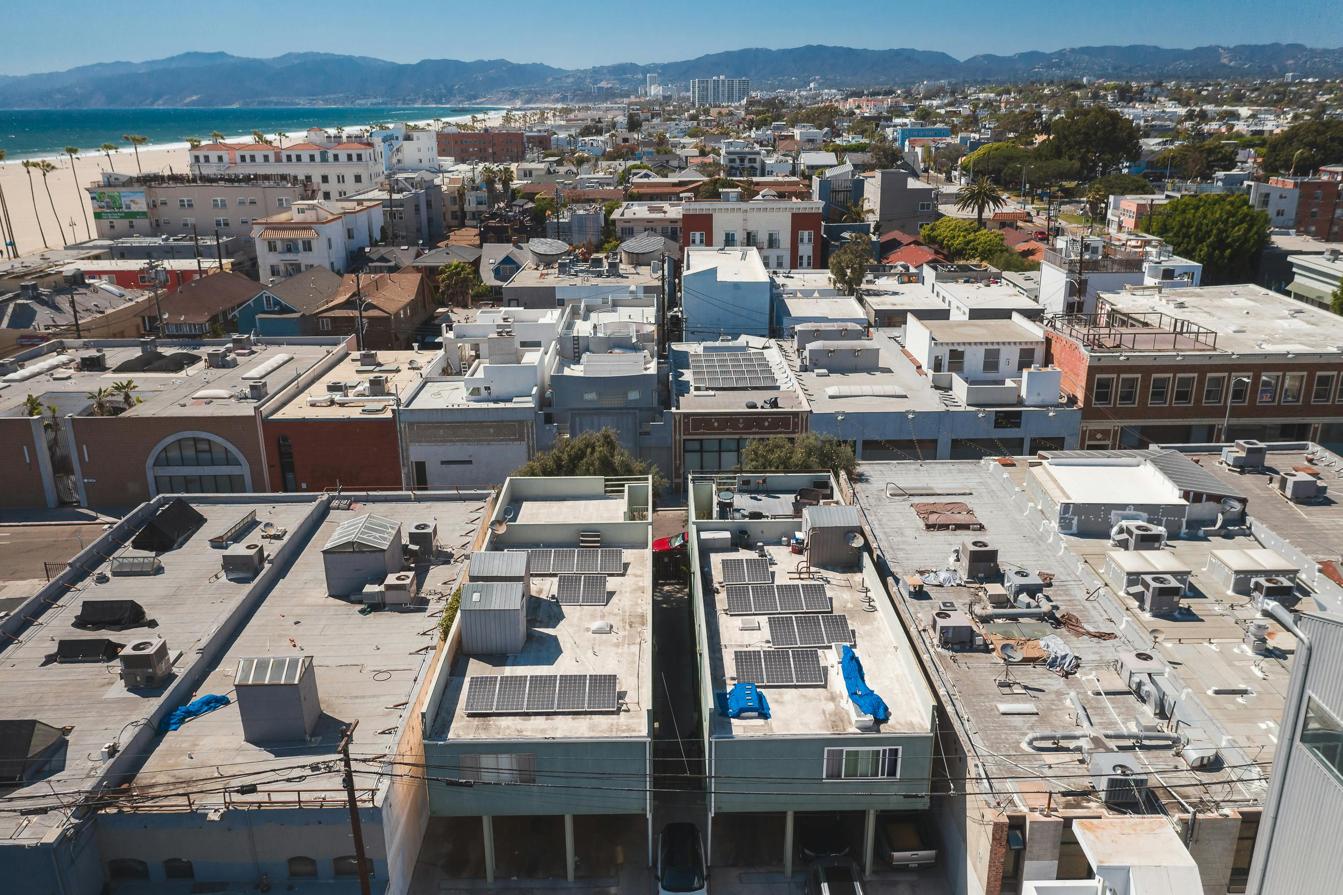How Insurance Companies are Leveraging Roof Drones in California for Superior Inspections
Introduction
Insurance companies in California are increasingly utilizing roof drones to enhance inspection processes. These high-tech tools provide an innovative approach to assessing damages, ensuring accuracy, efficiency, and safety. By embracing drone technology, insurers can avoid the limitations of traditional inspections, thus offering better service to their clients. This blog explores how drones have transformed the landscape of roof inspections, the benefits they bring to the insurance industry, and the regulatory aspects governing their use in California.

The Evolution of Drone Technology in Insurance
Drone technology has come a long way since its inception. Initially used primarily for military applications, drones have now found their way into various industries, including insurance. As technology advanced, drones became more affordable, capable, and versatile. Insurance companies recognized the potential of drone technology to streamline inspection processes, especially for difficult-to-access areas like roofs.
The shift towards using drones in roof inspections began as insurers sought more efficient methods to assess damages promptly. Manual inspections often posed risks, delays, and potential inaccuracies. Drones, on the other hand, offered a safer and quicker solution. High-resolution cameras and advanced sensors equipped on drones enable insurers to capture detailed imagery and data, providing a comprehensive overview of the roof’s condition.
Benefits of Using Drones for Roof Inspections
The advantages of incorporating drones into roof inspections are manifold. Firstly, drones provide enhanced safety for inspectors. Assessing roof damages manually often involves climbing ladders and walking on unstable surfaces, posing significant risks. Drones eliminate the need for such hazardous activities, ensuring the safety of both the inspector and the homeowner.
Secondly, drones offer unparalleled accuracy and efficiency. Their advanced cameras capture high-resolution images and videos, allowing inspectors to identify even the smallest defects or damages. This level of detail ensures precise assessments and helps in making informed decisions regarding claims. Moreover, drones can cover large areas quickly, significantly reducing the time required for inspections.
Cost-effectiveness is another notable benefit. Traditional roof inspections often involve considerable labor and equipment costs. Drones, being relatively affordable and efficient, can reduce these expenses. By streamlining the inspection process, insurance companies can save on operational costs and pass on the benefits to policyholders through lower premiums or faster claim settlements.
Furthermore, drones contribute to better documentation and record-keeping. The imagery and data collected during drone inspections can be stored digitally, providing a robust record for future reference. This digital documentation can be particularly useful in cases of disputes or when assessing cumulative damages over time.

Key Features of Effective Inspection Drones
When it comes to selecting drones for roof inspections, certain features are essential to ensure optimal performance. Here are some key features:
- High-Resolution Cameras: Drones equipped with high-resolution cameras can capture detailed images, enabling thorough inspections.
- Stability and Maneuverability: Drones should offer stability to capture clear images and videos, especially in windy conditions. Advanced maneuverability ensures the drone can access tight or hard-to-reach spaces.
- Sensors and Imaging Technology: Aside from cameras, drones can have various sensors, including thermal imaging, to detect hidden damages such as leaks or insulation issues.
- Battery Life and Range: Long battery life and extensive range allow drones to complete inspections without frequent recharging, making the process more efficient.
- Software Integration: Effective drones integrate seamlessly with software for processing and analyzing inspection data, enhancing the utility of the collected information.
Insurance companies typically select drones based on these features to ensure a high degree of accuracy and efficiency in their roof inspections.

Legal and Regulatory Considerations in California
The use of drones for roof inspections in California involves adhering to specific legal and regulatory frameworks, primarily stipulated by the Federal Aviation Administration (FAA) and state laws. These regulations are designed to ensure the safe and responsible usage of drones while protecting privacy and airspace safety.
- FAA Regulations: Drones used for commercial purposes, including insurance inspections, must be registered with the FAA. Operators are required to hold a Remote Pilot Certificate, which involves passing a knowledge test on airspace regulations and safe drone operations.
- Californian Laws: California has additional state-specific drone regulations. These address privacy concerns, prohibiting drones from capturing images or videos in a manner that invades individual privacy rights.
- No-Fly Zones: Certain areas, such as near airports or restricted government spaces, are designated as no-fly zones. Insurance companies must ensure their drone operations comply with these restrictions to avoid legal troubles.
- Insurance and Liability: Operators should have liability insurance to cover potential damages or accidents involving their drones. This is crucial for mitigating risks and ensuring responsible operations.
Navigating these regulatory landscapes requires a thorough understanding of both federal and state laws. Insurance companies often employ or consult with legal experts to ensure full compliance and to smoothly integrate drones into their inspection processes.
Real-World Case Studies
Several insurance companies in California have successfully integrated drone technology into their roof inspection processes, showcasing the practical benefits and efficiency gains.
- Farmers Insurance: Implementing drone technology, Farmers Insurance has significantly reduced the time taken to assess roof damages. The ability to quickly dispatch drones to affected areas has enabled faster claim processing and enhanced customer satisfaction.
- State Farm: Known for its innovative approach, State Farm leverages drones equipped with thermal imaging and high-resolution cameras. This technology allows for detailed roof inspections and early detection of issues like leaks, leading to proactive maintenance and reduced long-term costs for both the company and policyholders.
- Allstate: By employing drones for roof inspections, Allstate has improved the precision of damage assessments. The high-quality imagery and comprehensive data collected help in accurately estimating repair costs, thereby ensuring fair and prompt settlements.
These real-world examples demonstrate how drones are transforming roof inspections, yielding tangible benefits for insurance companies and their clients.
Future Trends in Drone Usage for Insurance Companies
The future of drone technology in the insurance sector looks promising, with several emerging trends set to revolutionize roof inspections further.
- AI and Machine Learning Integration: The incorporation of AI and machine learning will enhance the analysis of the collected data, enabling predictive maintenance and more precise damage assessments.
- Enhanced Imaging and Sensing Technologies: Future drones may incorporate more advanced sensors and imaging technologies, offering even greater detail and insights into roof conditions.
- Automated Inspections: Autonomous drones capable of conducting inspections without manual control are on the horizon. These drones can carry out regular inspections and send real-time data to insurance companies, ensuring ongoing monitoring and maintenance.
- Greater Collaboration with Roofing Companies: Increased collaboration between insurance and roofing companies can streamline the repair process, offering homeowners faster solutions and reducing the overall claim cycle.
By staying ahead of these trends, insurance companies can continue to leverage drone technology effectively, enhancing their inspection processes and overall service delivery.
Conclusion
Incorporating drones into roof inspections has undoubtedly transformed the insurance landscape in California. Drones offer unparalleled accuracy, efficiency, and safety, making them an invaluable tool for insurance companies. As technology continues to evolve, the potential for further enhancing these processes is immense. By adhering to regulatory standards and staying abreast of future trends, insurers can leverage drones to offer superior service and maintain a competitive edge.
Frequently Asked Questions
What are the key regulations for using drones in California for roof inspections?
Drones must be registered with the FAA, and operators need a Remote Pilot Certificate. California has specific privacy laws, and no-fly zones must be respected.
How do insurance companies benefit from using drones?
Drones offer enhanced accuracy, efficiency, and safety in inspections. They reduce costs, provide detailed documentation, and speed up the claim process.
What are some of the best drones available for roof inspections?
Effective inspection drones feature high-resolution cameras, stability, advanced sensors, long battery life, and software integration for data analysis.

